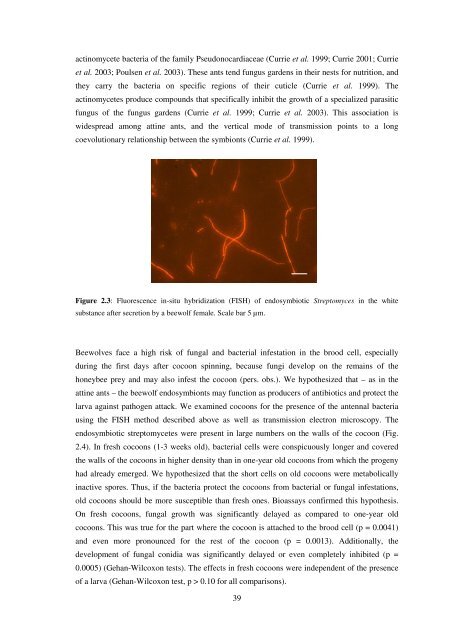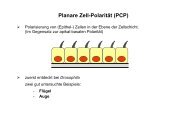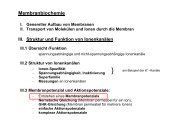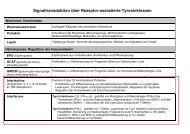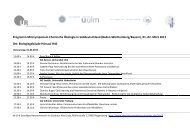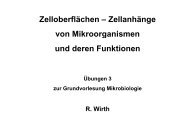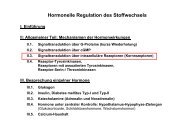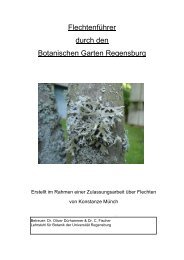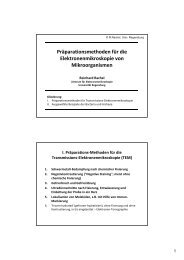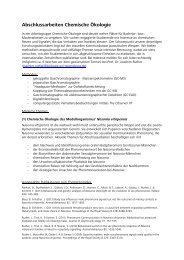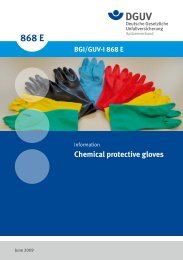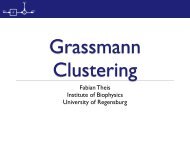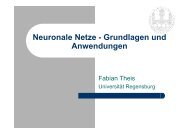PhD thesis
PhD thesis
PhD thesis
Create successful ePaper yourself
Turn your PDF publications into a flip-book with our unique Google optimized e-Paper software.
actinomycete bacteria of the family Pseudonocardiaceae (Currie et al. 1999; Currie 2001; Currie<br />
et al. 2003; Poulsen et al. 2003). These ants tend fungus gardens in their nests for nutrition, and<br />
they carry the bacteria on specific regions of their cuticle (Currie et al. 1999). The<br />
actinomycetes produce compounds that specifically inhibit the growth of a specialized parasitic<br />
fungus of the fungus gardens (Currie et al. 1999; Currie et al. 2003). This association is<br />
widespread among attine ants, and the vertical mode of transmission points to a long<br />
coevolutionary relationship between the symbionts (Currie et al. 1999).<br />
Figure 2.3: Fluorescence in-situ hybridization (FISH) of endosymbiotic Streptomyces in the white<br />
substance after secretion by a beewolf female. Scale bar 5 µm.<br />
Beewolves face a high risk of fungal and bacterial infestation in the brood cell, especially<br />
during the first days after cocoon spinning, because fungi develop on the remains of the<br />
honeybee prey and may also infest the cocoon (pers. obs.). We hypothesized that – as in the<br />
attine ants – the beewolf endosymbionts may function as producers of antibiotics and protect the<br />
larva against pathogen attack. We examined cocoons for the presence of the antennal bacteria<br />
using the FISH method described above as well as transmission electron microscopy. The<br />
endosymbiotic streptomycetes were present in large numbers on the walls of the cocoon (Fig.<br />
2.4). In fresh cocoons (1-3 weeks old), bacterial cells were conspicuously longer and covered<br />
the walls of the cocoons in higher density than in one-year old cocoons from which the progeny<br />
had already emerged. We hypothesized that the short cells on old cocoons were metabolically<br />
inactive spores. Thus, if the bacteria protect the cocoons from bacterial or fungal infestations,<br />
old cocoons should be more susceptible than fresh ones. Bioassays confirmed this hypo<strong>thesis</strong>.<br />
On fresh cocoons, fungal growth was significantly delayed as compared to one-year old<br />
cocoons. This was true for the part where the cocoon is attached to the brood cell (p = 0.0041)<br />
and even more pronounced for the rest of the cocoon (p = 0.0013). Additionally, the<br />
development of fungal conidia was significantly delayed or even completely inhibited (p =<br />
0.0005) (Gehan-Wilcoxon tests). The effects in fresh cocoons were independent of the presence<br />
of a larva (Gehan-Wilcoxon test, p > 0.10 for all comparisons).<br />
39


